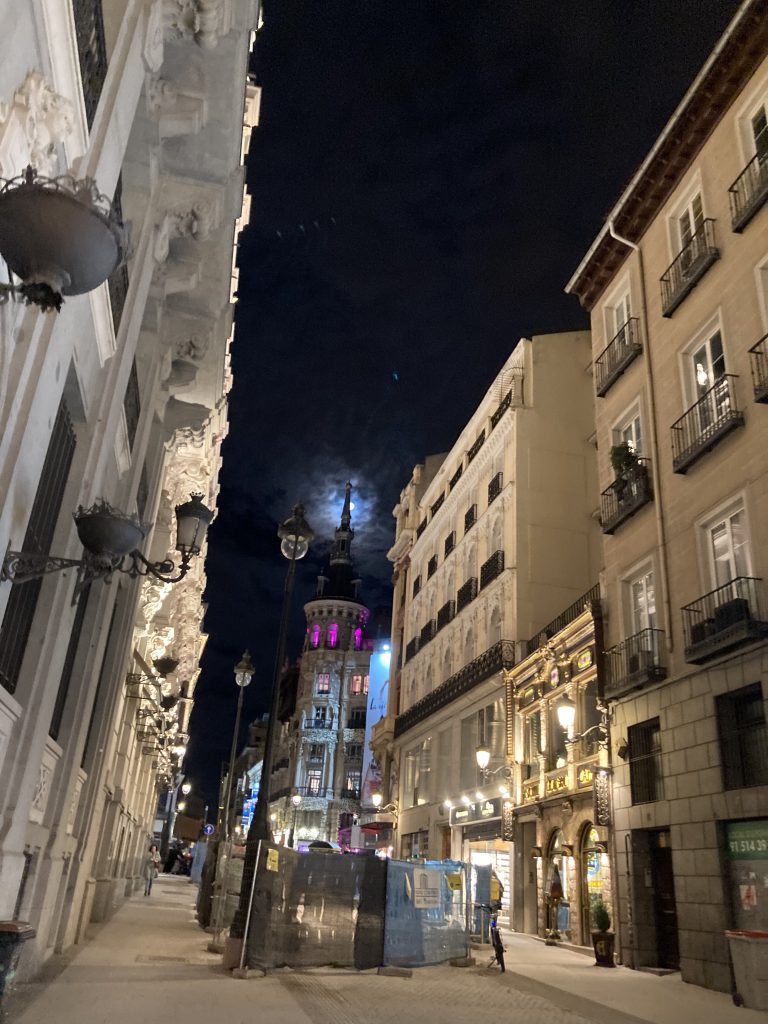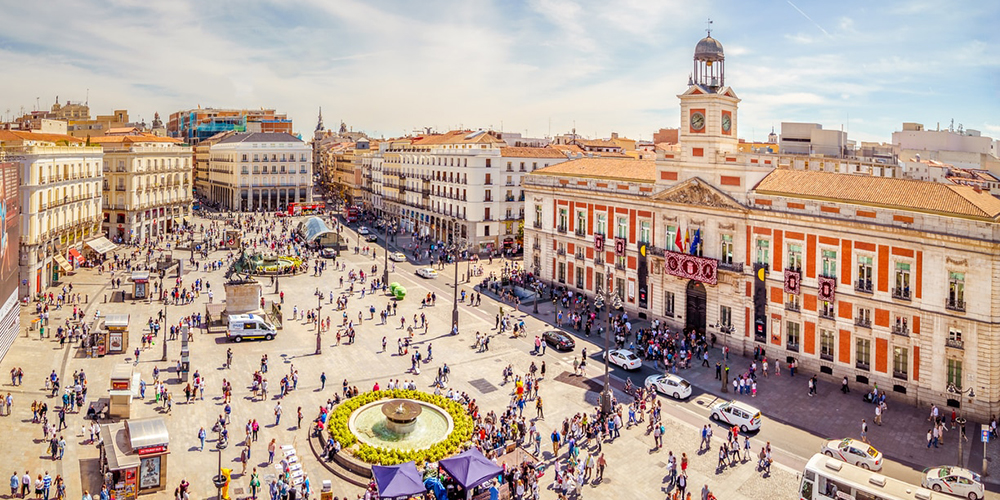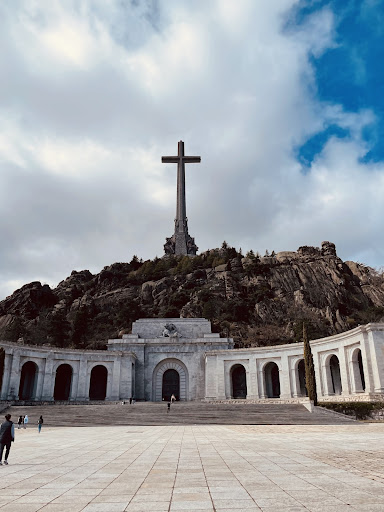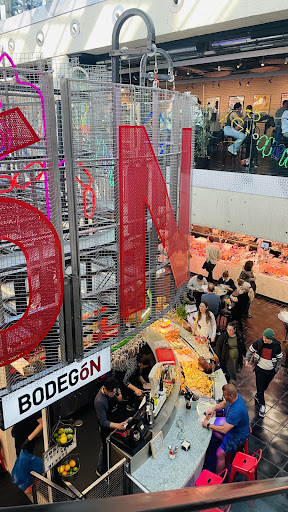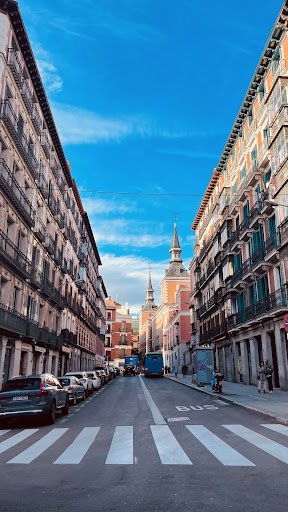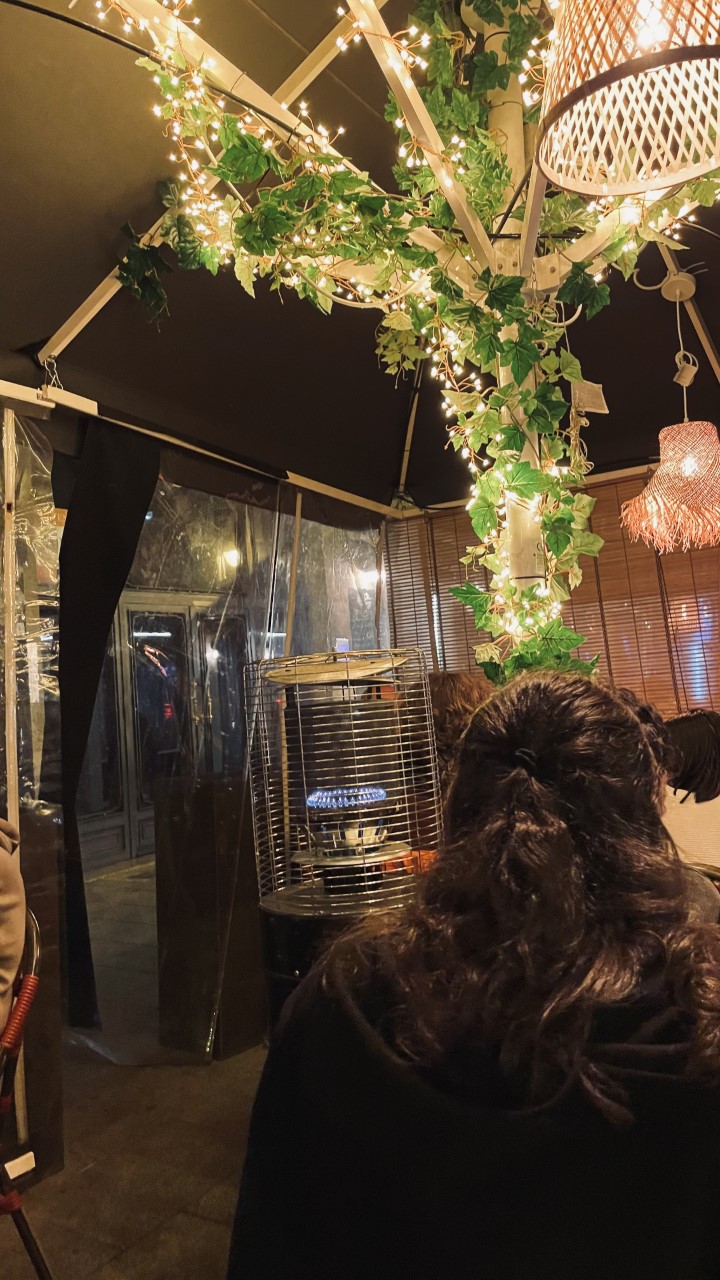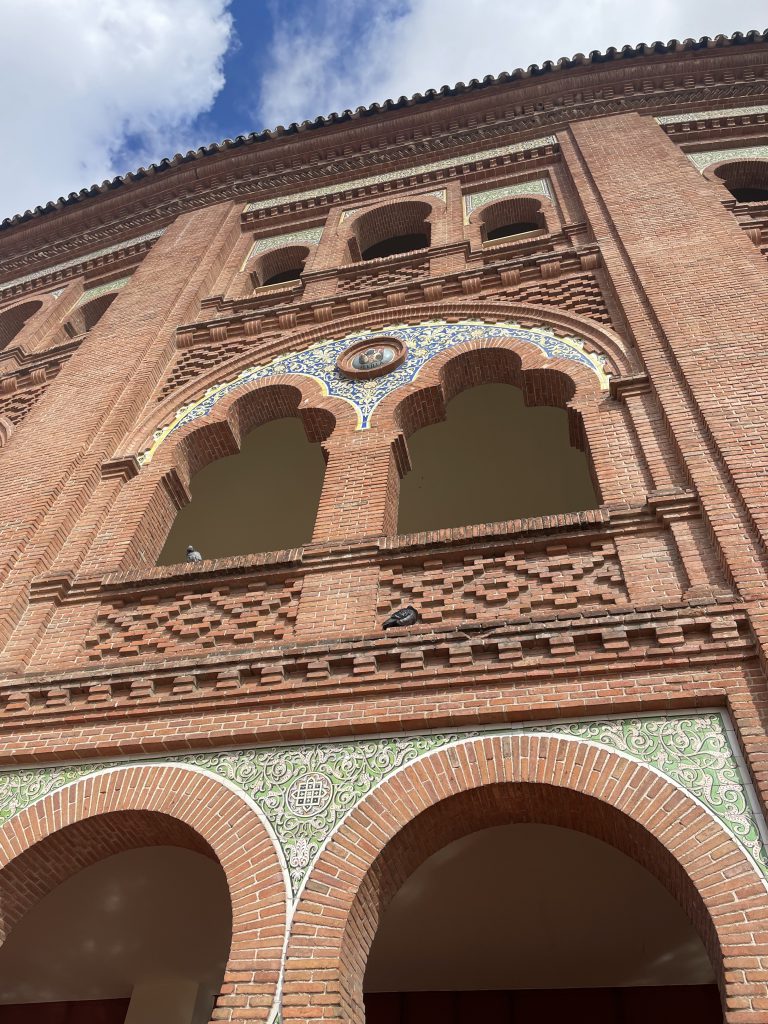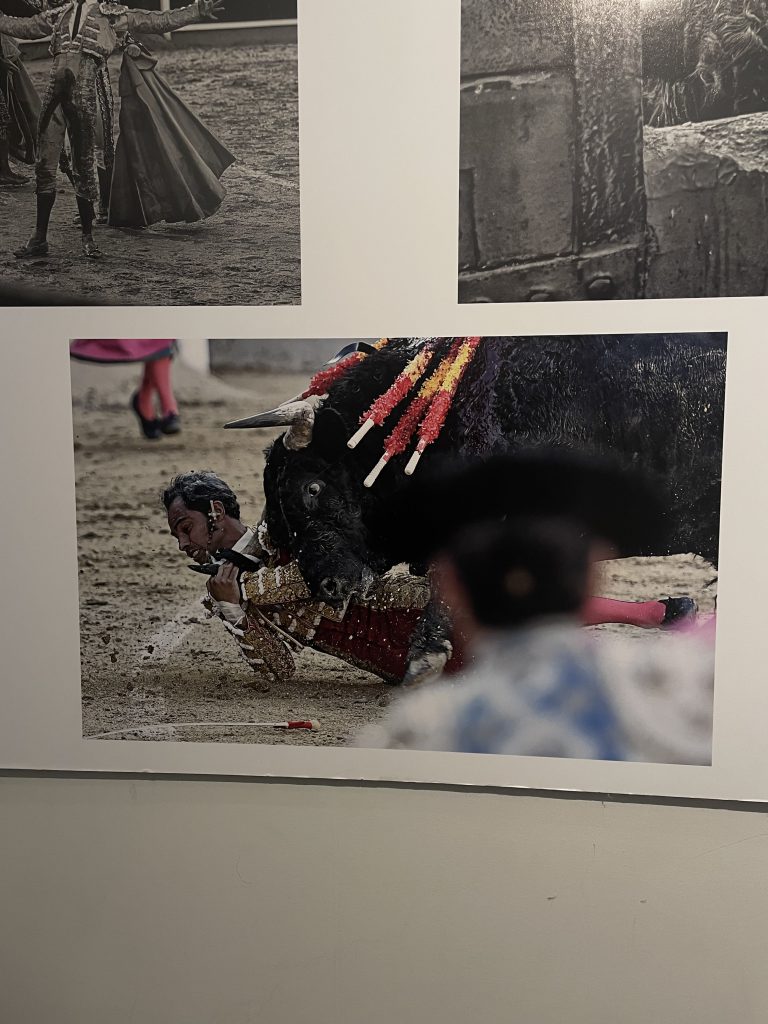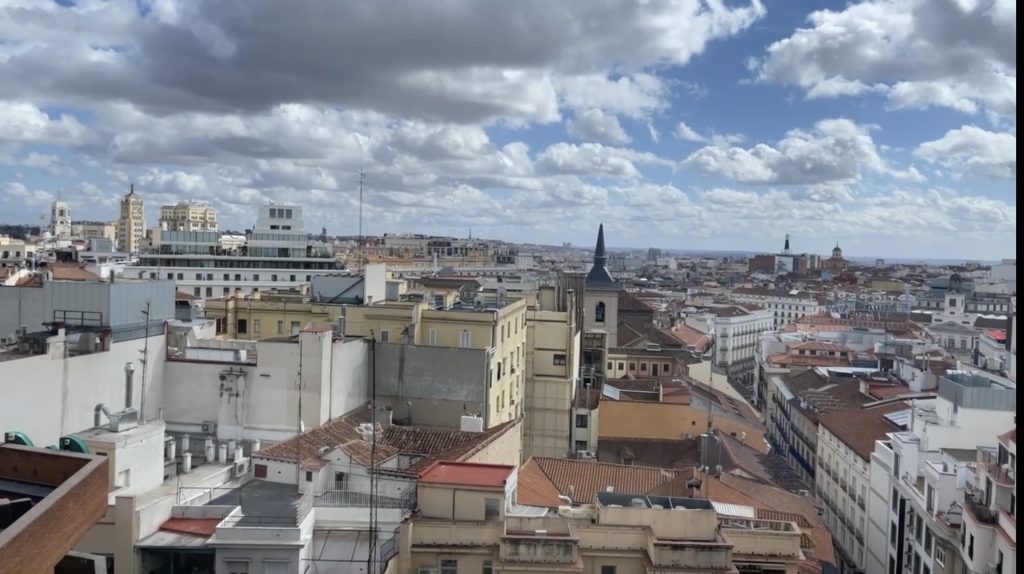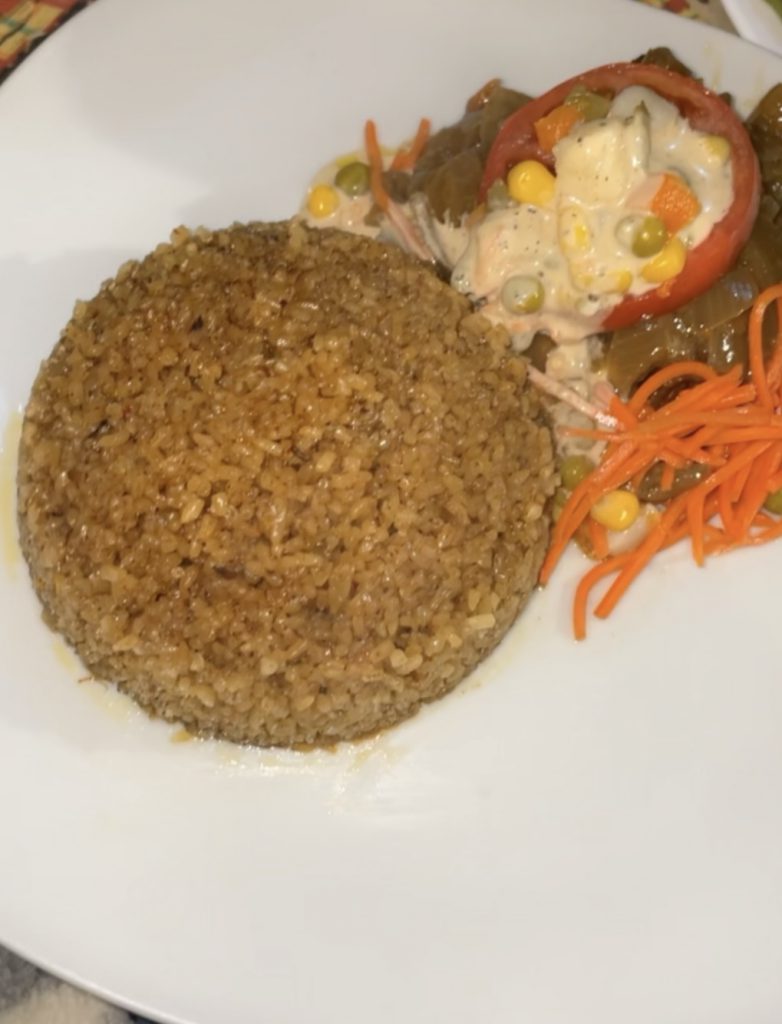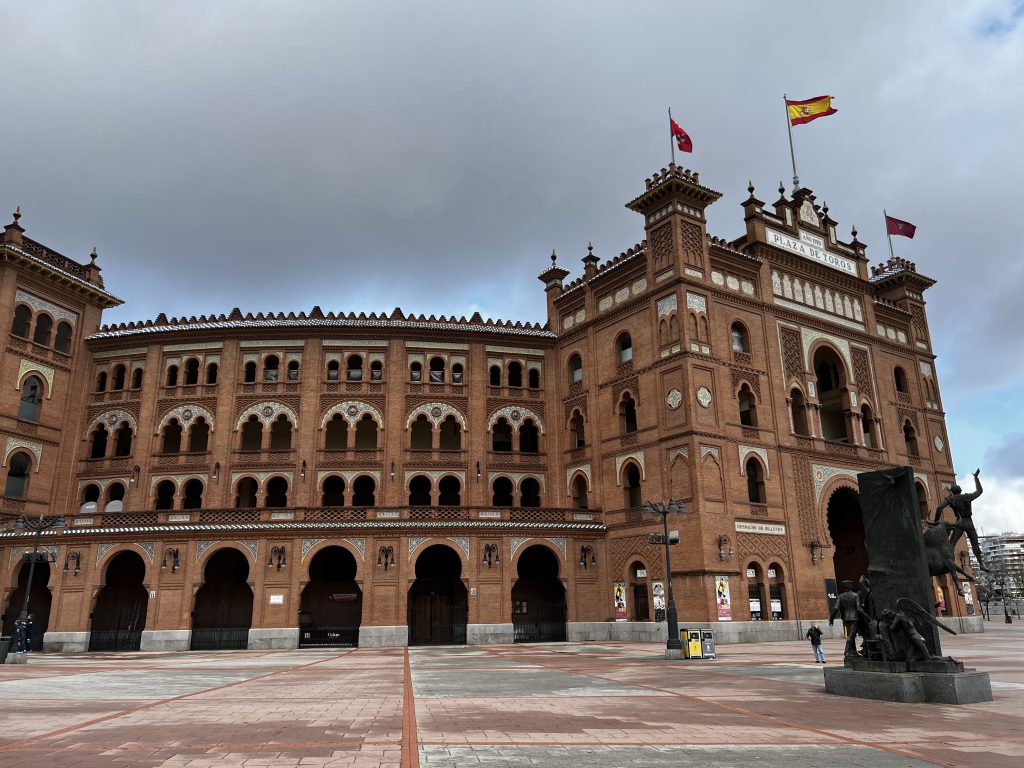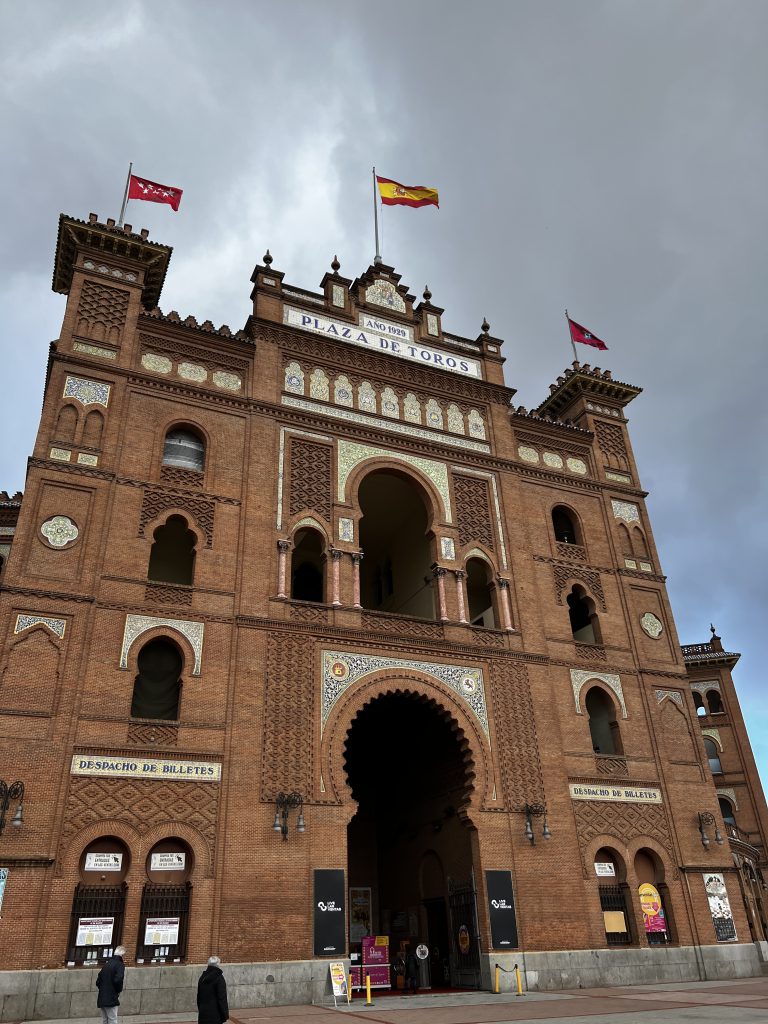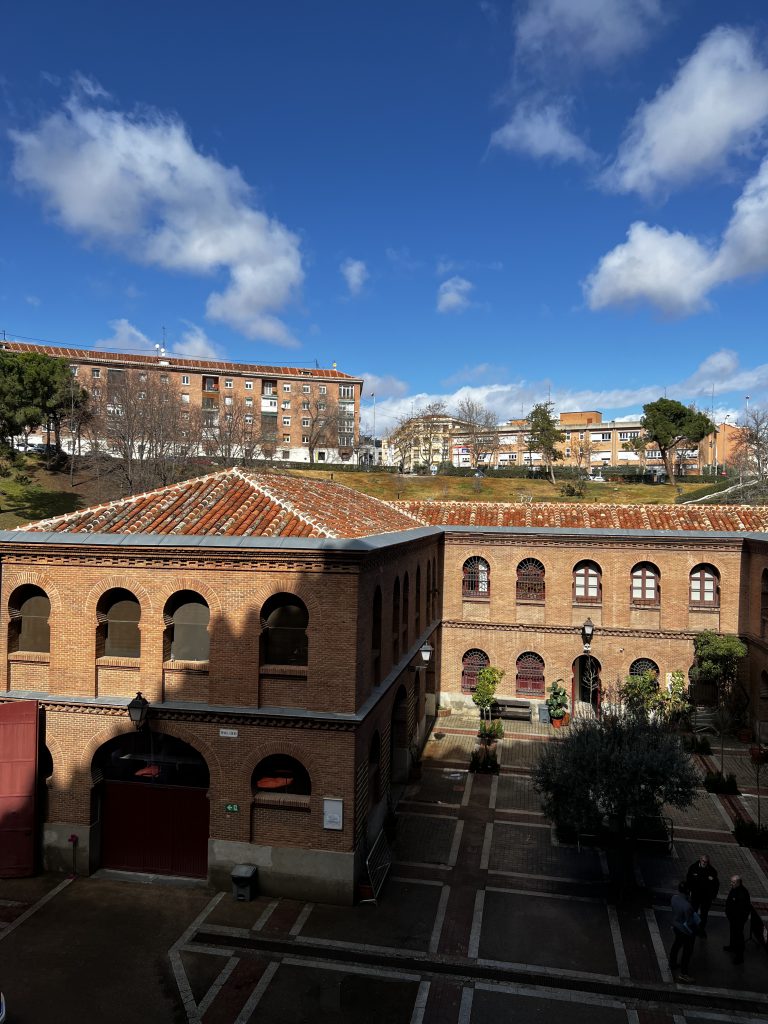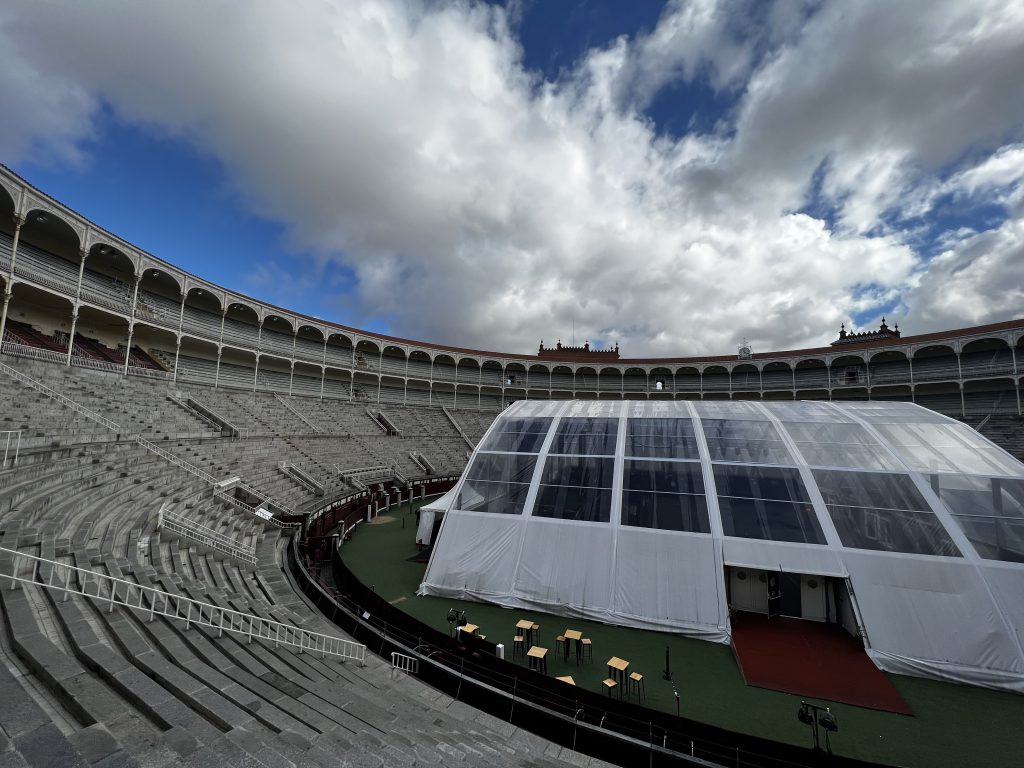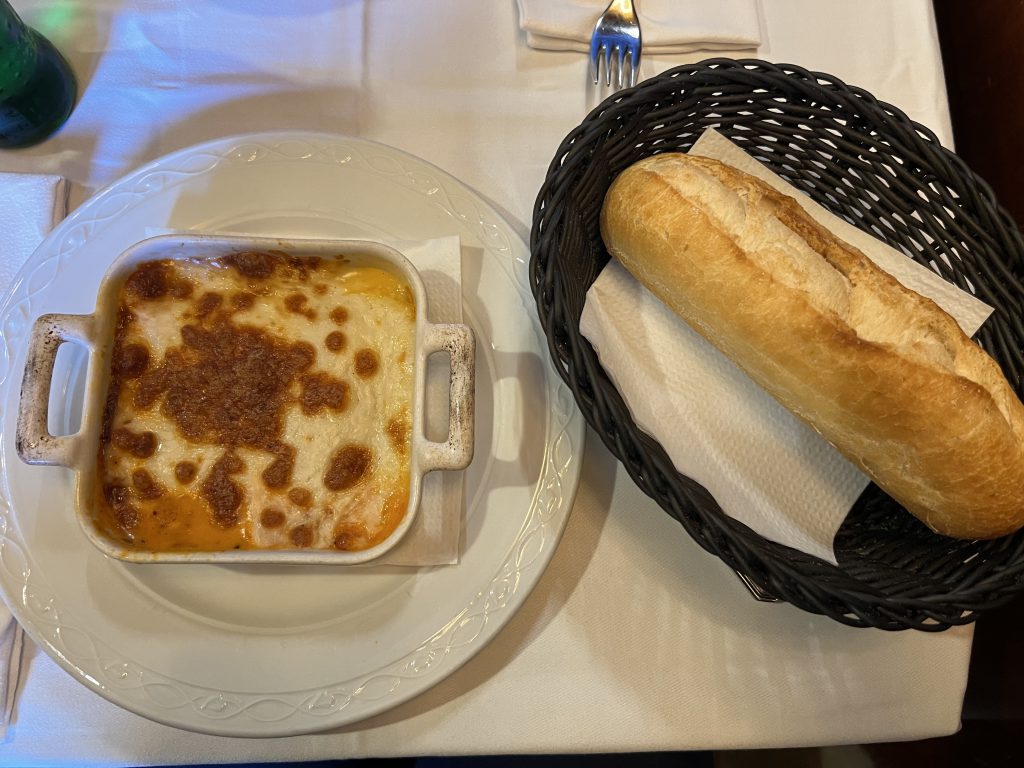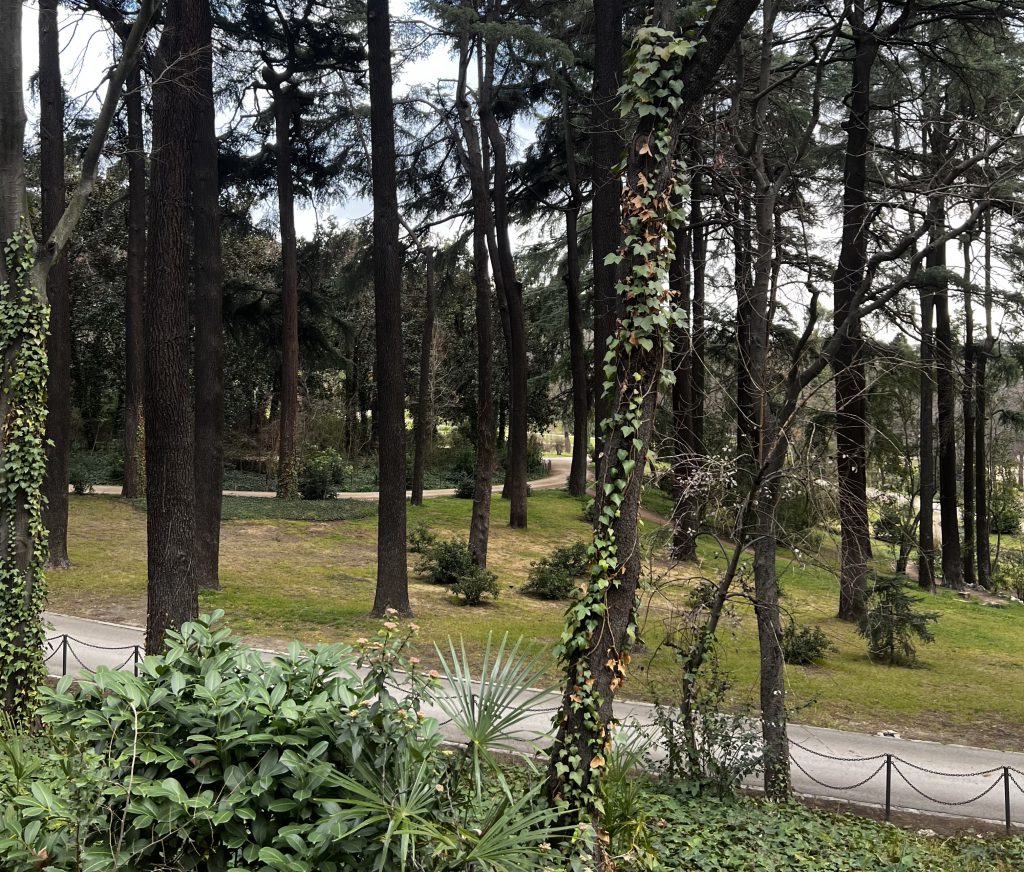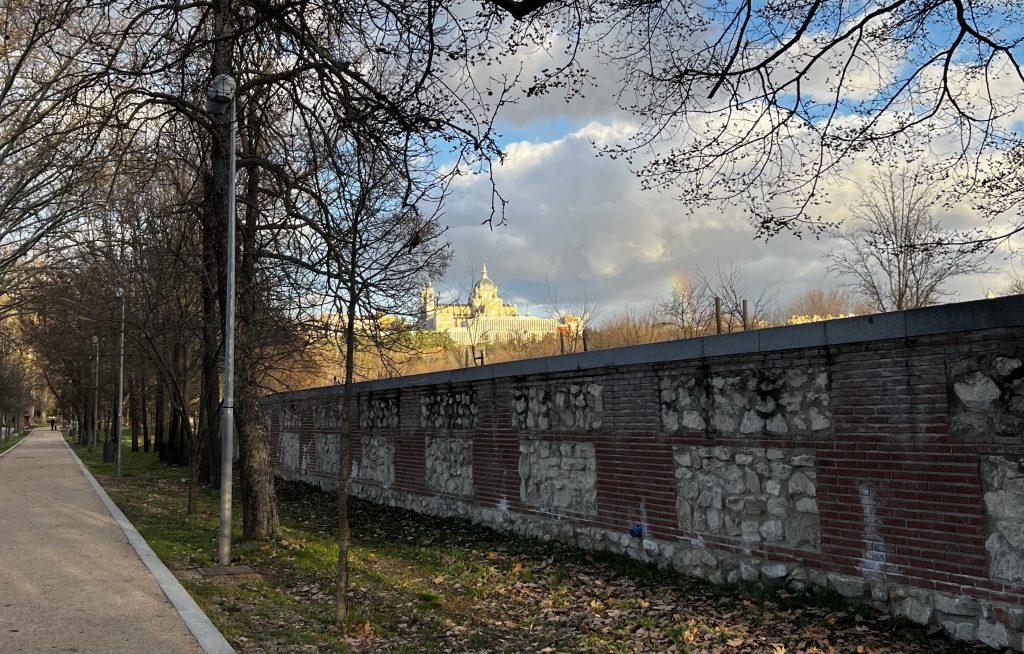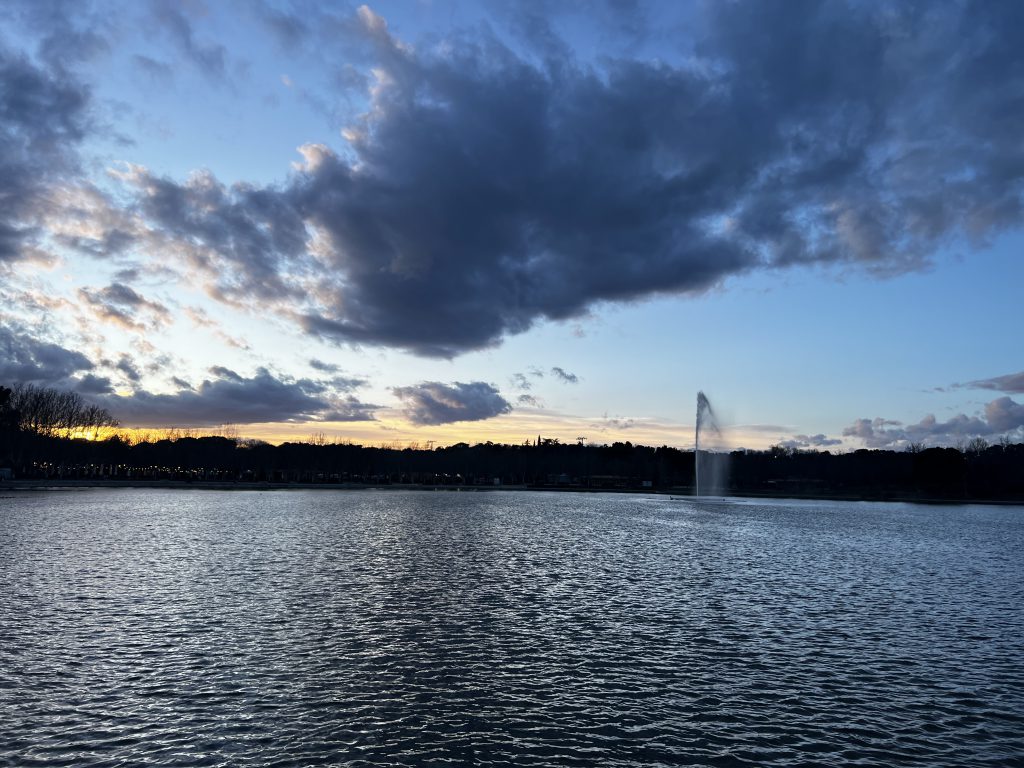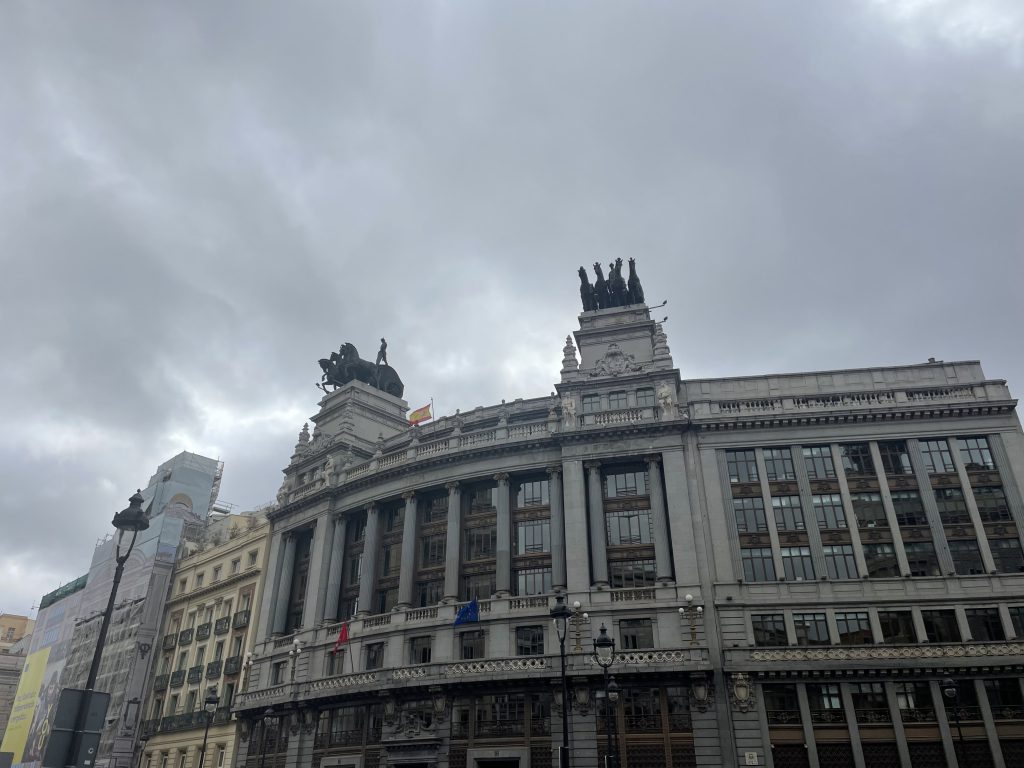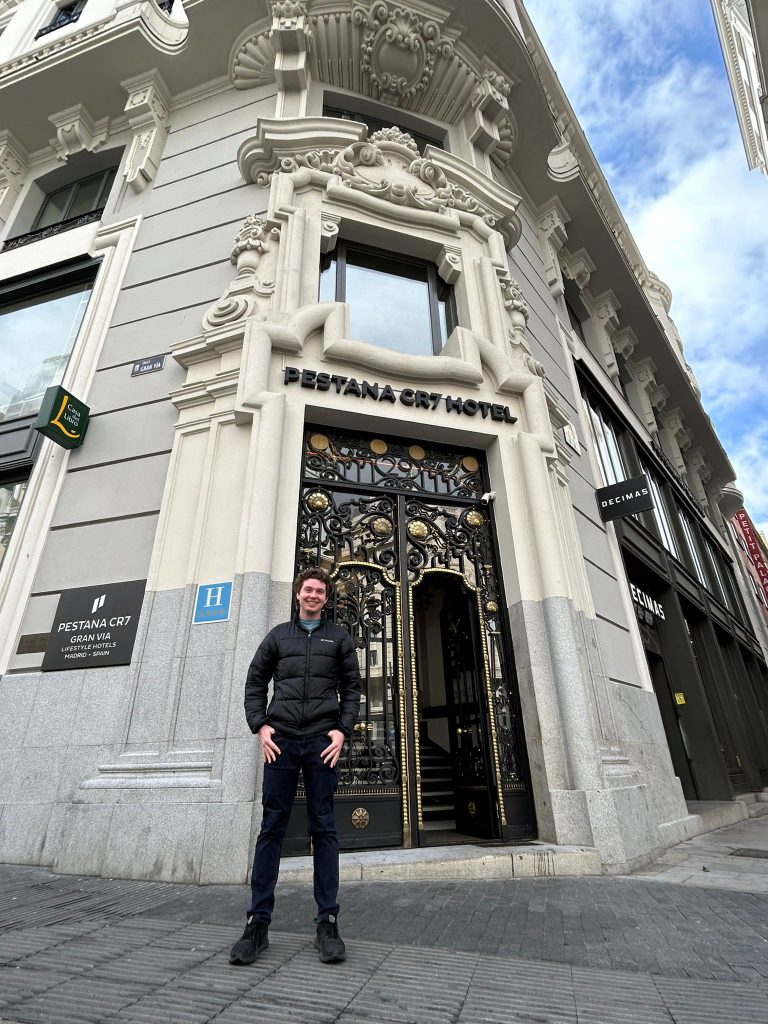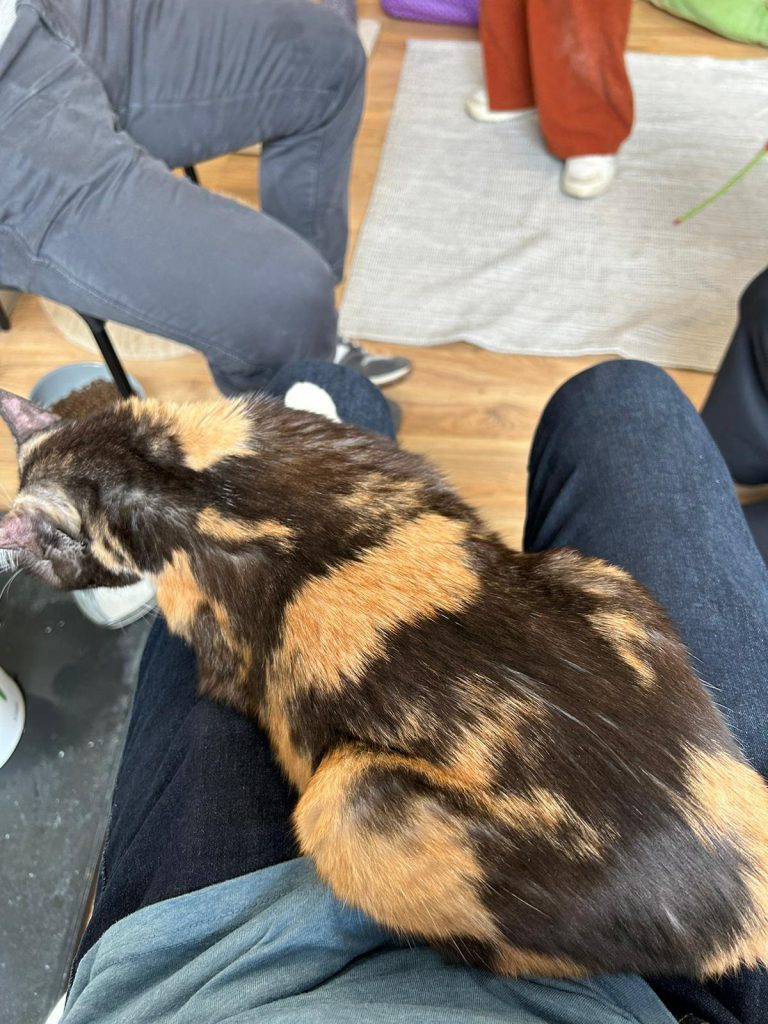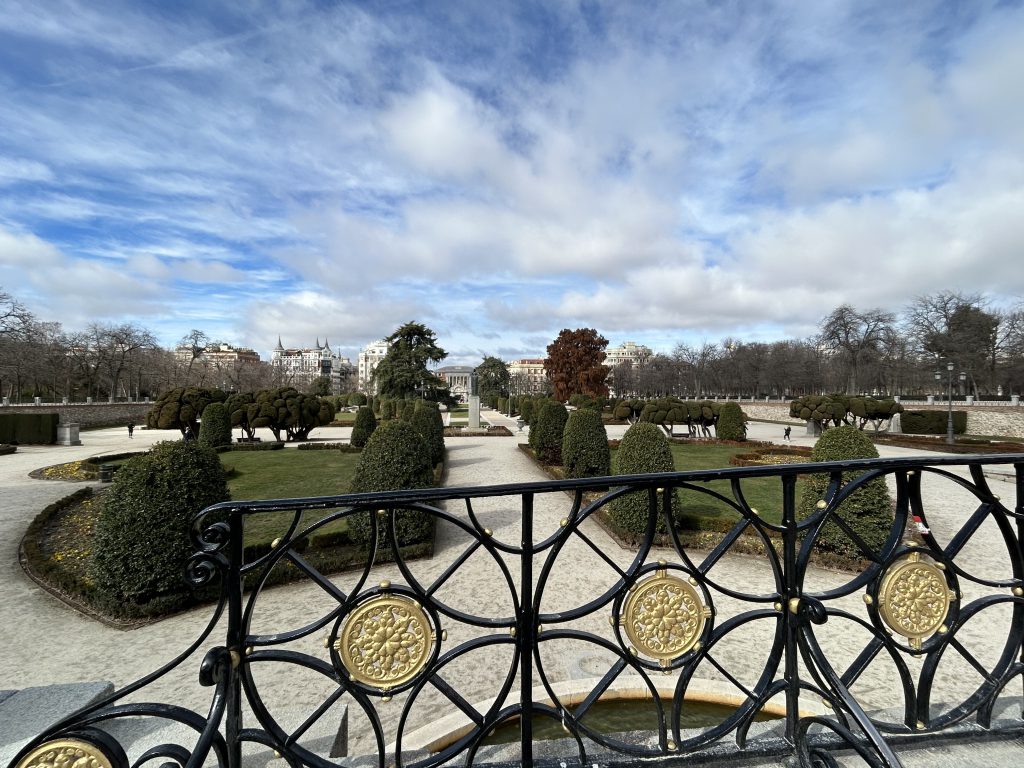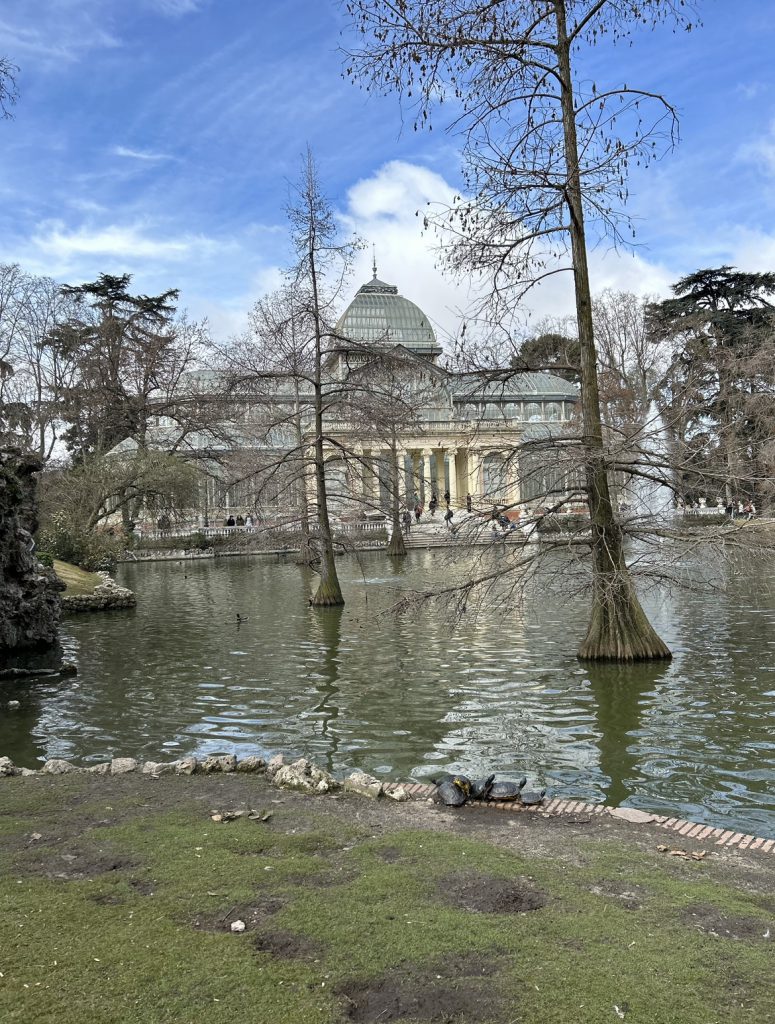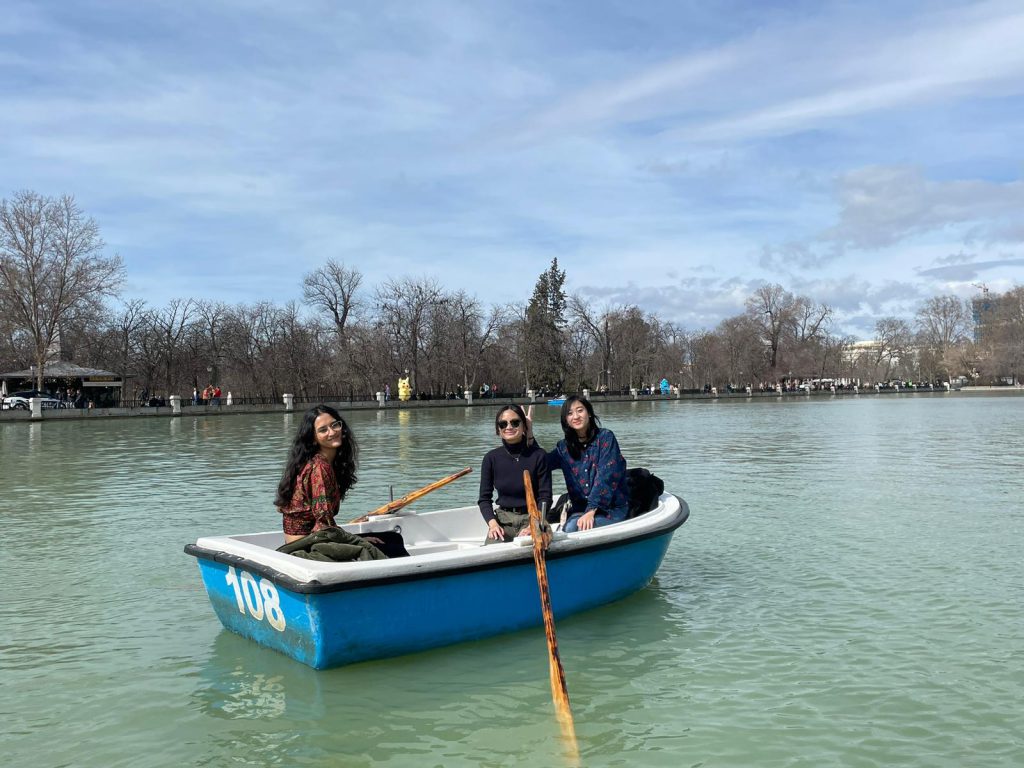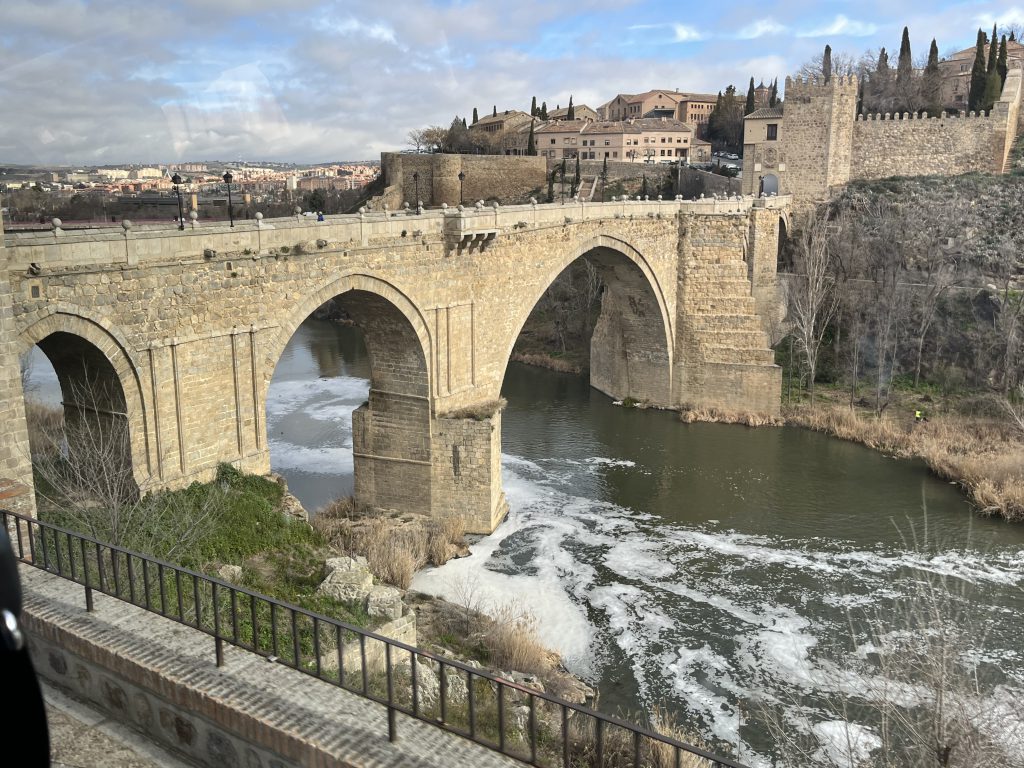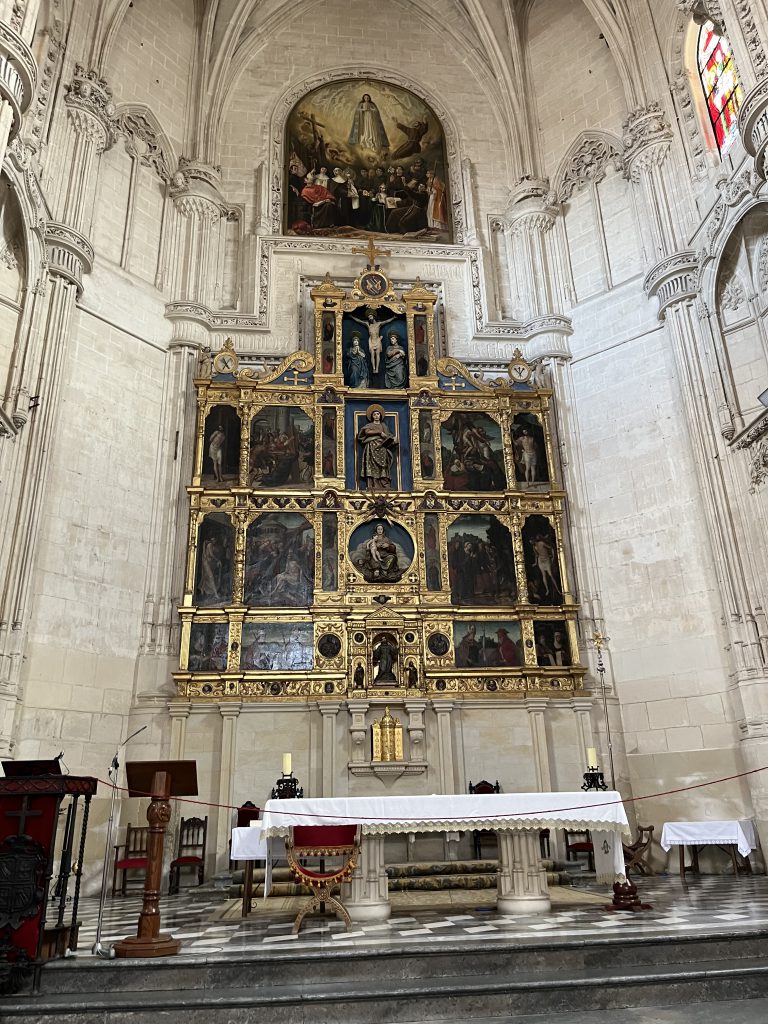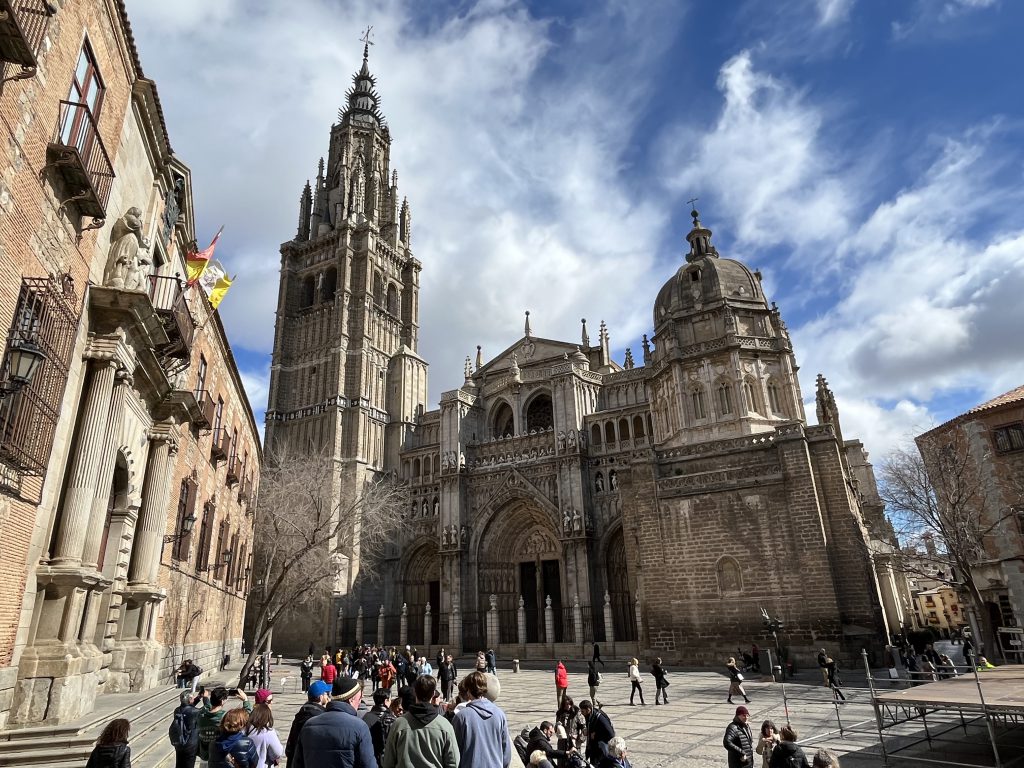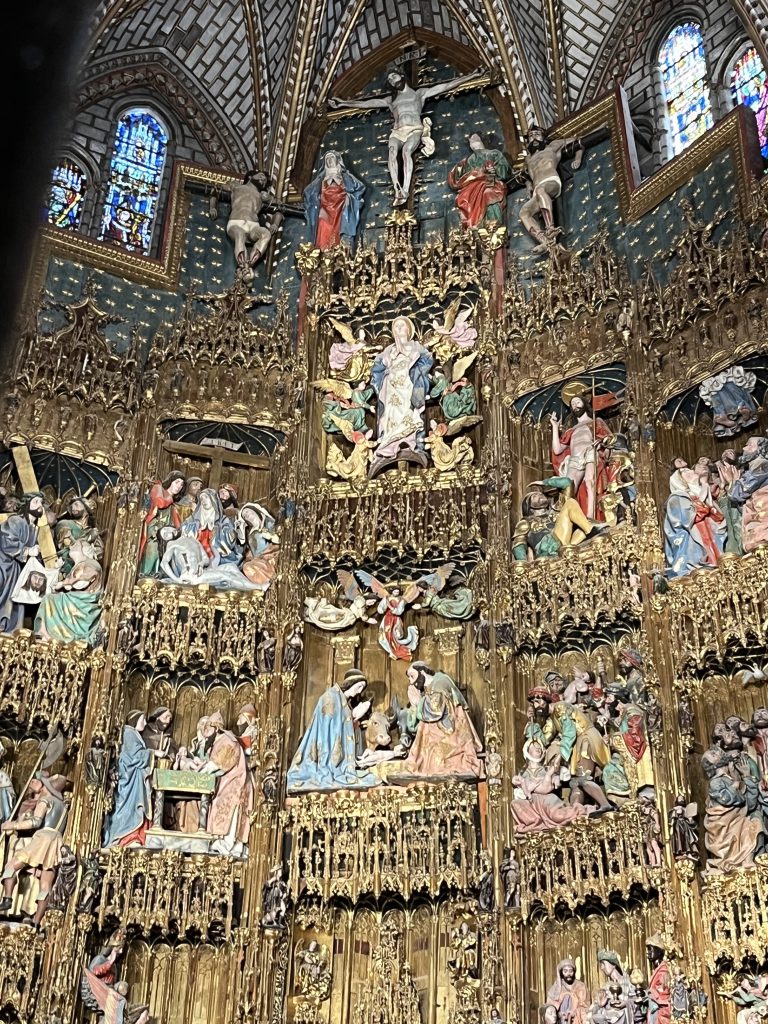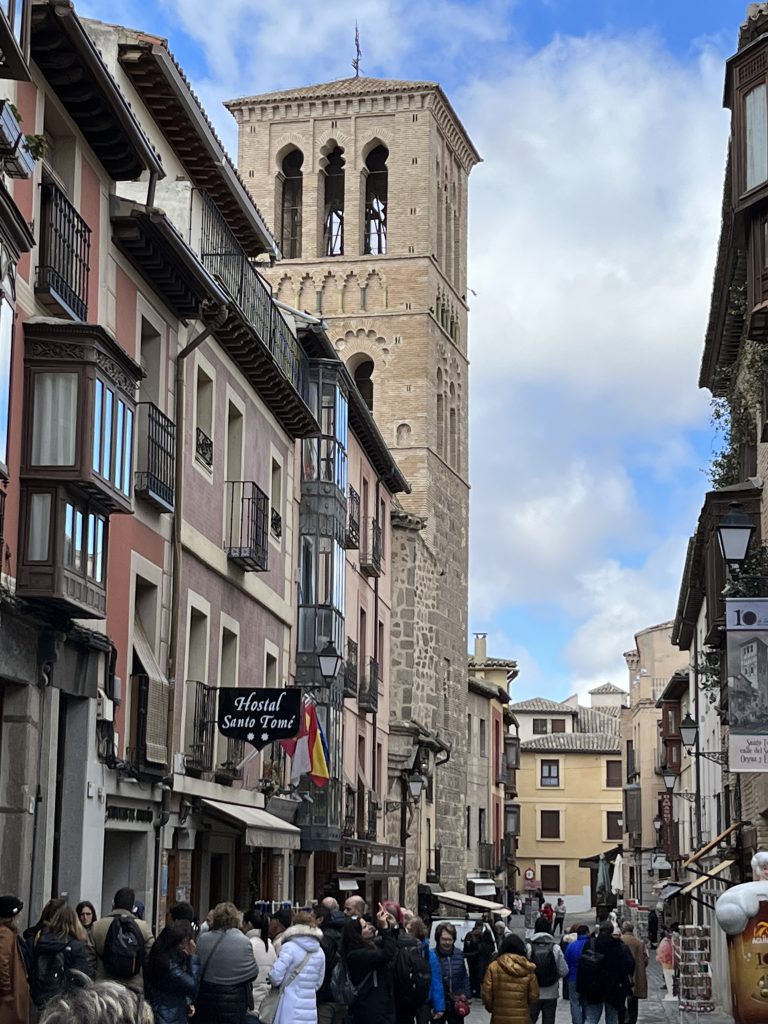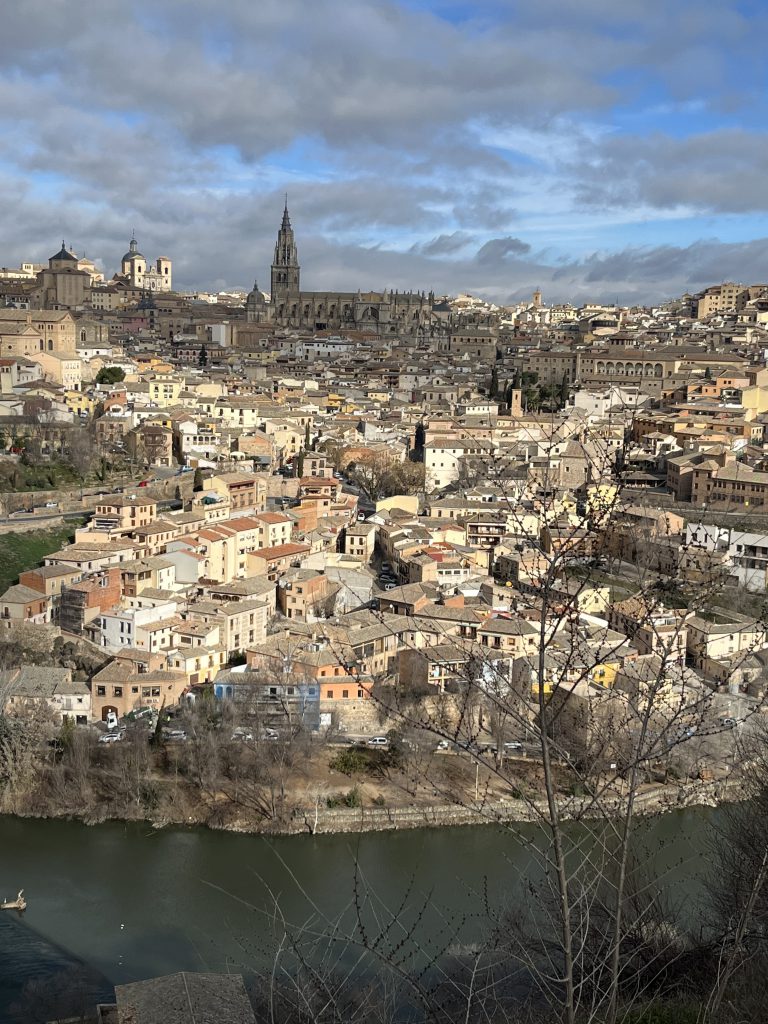I had never realized how horrific the Boston public transportation was until I finally came back at the airport at 7:25pm and wasn’t able to get to the train from North Station to Lowell until 11:00pm…I ALREADY MISS SPAIN! Too much happened over the course of the week but I’ll do my best to get the best moments in this blog, especially the places I visited during the solo trips away from the group and scavenger hunt (sorry Prof.Z).
So it all started with me pulling up to the airport with no plane ticket expecting to get a ride. I didn’t realize the immersive scholarship didn’t include the plane ticket and when I realized this on the plane ticket I started to panic but Therese, who came with me to the airport helped me get into contact with UML’s study abroad team and we figured out a last second trip to England. And then to Spain. I arrived in England the day after and had an 8 hour overlay on my hands. I wasn’t able to sleep on the plane and was still not tired after the 6 hour ride so I decided to take the express to Paddington at the heart of London. The ride there was so easy to get into and it took through so many fascinating neighborhoods and boroughs that I wish I had more time to interact with than just a glimpse from the window. When I got to Paddington I was quickly disappointed because there was NOTHING TO DO THERE so I did some research on some of the neighborhoods in London and headed off to Upton Park/Green Street, a place with a rich south asian community and very little tourists. Upon arrival I was amazed with the beauty of the neighborhood and the diversity of shops and restaurants there. Upon walking down, I came across the Queen’s Market which was a hub of businesses of people in the area, whose backgrounds ranged across South Asia and MENA (Middle East and North Africa). There were jewelry shops, Halal butcheries, sewing kits, cookware stores, racks of handmade hijabs, and fruits and vegetables that you would never see in your local Market Basket. I sadly wasn’t able to get any photos because it was super crowded and I wasn’t comfortable taking a picture without a bunch of people’s faces in it.

After spending 30 minutes admiring the center of the market, I went back to its entrance and noticed a table with a few people outside asking for petition signatures. I decided to speak to one of them and they introduced themselves as Friends Of The Queens Market, a collective of Marxists who are protesting against the city government who’s trying to take down the market and replace it with municipal buildings, an extension of London’s plans to gentrify Green Street with condominiums and colonizers. I signed the petition despite not even living in the country and asked one of the organizers if they could help me find a souvenir of Green Street. They took me around Queens Market, walking into shops and asking vendors for ideas of what I could get as a souvenir but it was of no avail with my limited time in the city. As I prepared for my ride back to the metro, I exchanged numbers with one of the organizers so we can continue to keep in touch, and wished them good luck on their fight to save the market. Despite having no access to the internet since leaving the airport, the metro and express ride back went smoothly and I was able to catch my last flight to Spain just in time.
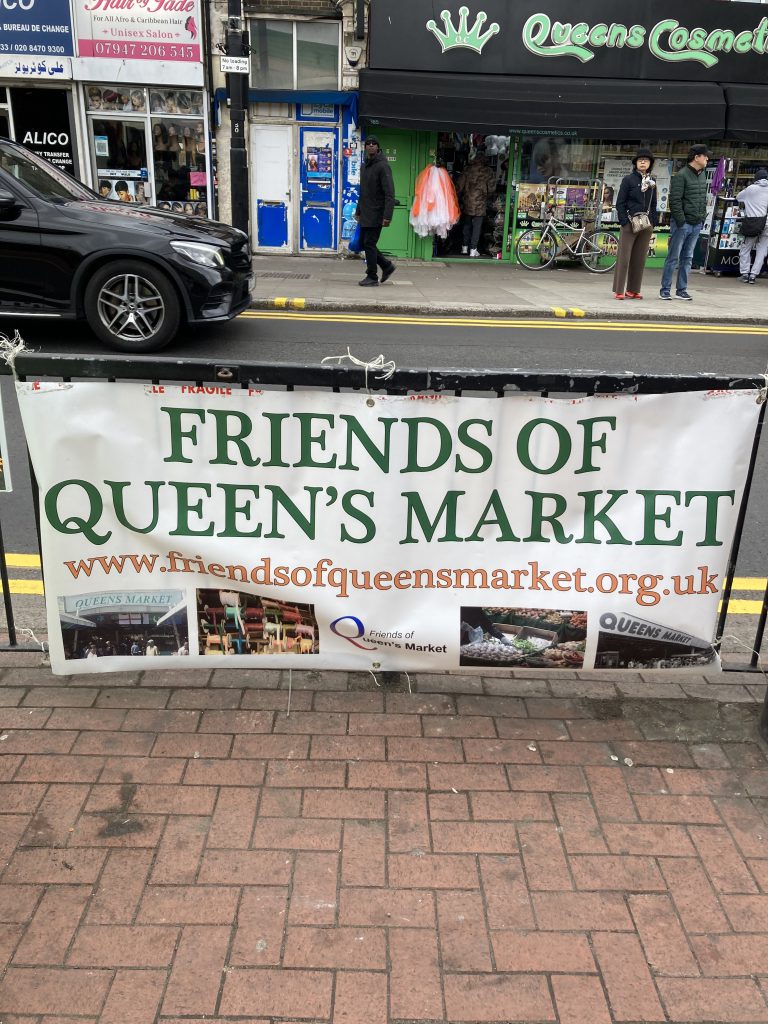
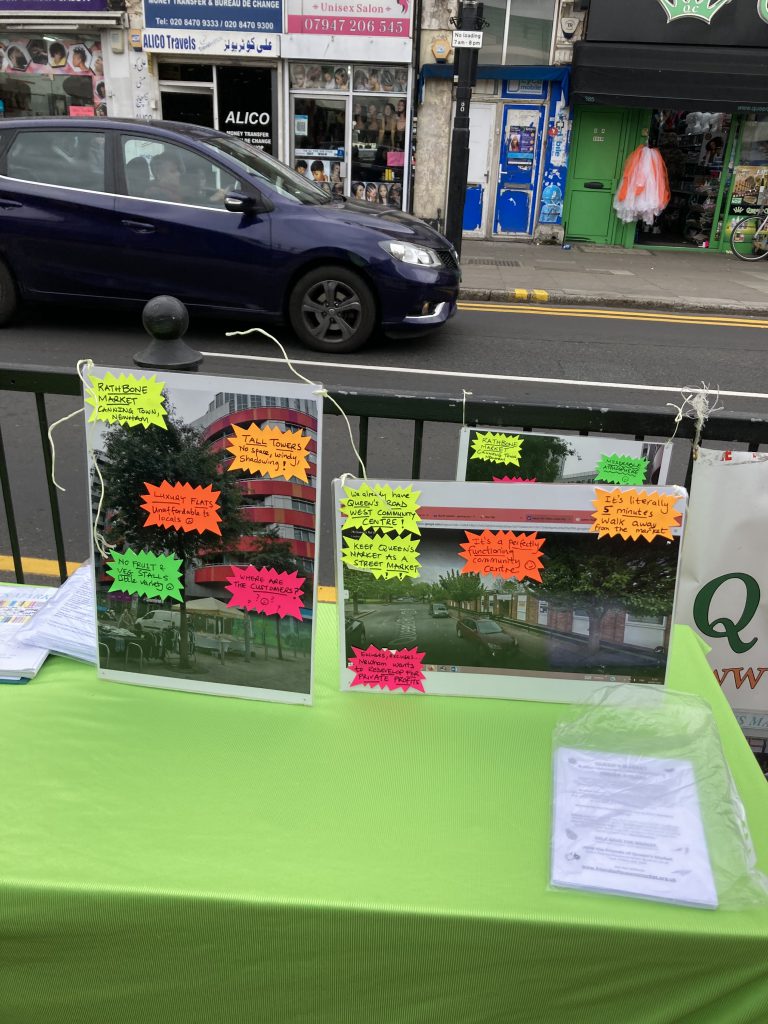

I got to Madrid around 9pm and messaged the others that I was still alive but completely exhausted. Not wanting to pay 30 euros for a taxi ride, I decided to take the metro all the way to hotel Regina which took me roughly an hour and a half to do, still running with no internet after leaving the airport. The metro workers couldn’t speak English so they helped me navigate the underground through body language and air diagrams. Along the way, I met some old ladies whose cards failed to scan through the turnstile while I was stuck trying to figure out how to pass the same turnstile because it required a different card than the one I bought five minutes ago. Despite the language barrier the three of us had, we worked together to pass through the gate without spending a euro through methods that I cannot share with you, and I was off on my final metro to the hotel. After experiencing a harder time navigating Gran Via, I finally stumbled across Hotel Regina and reunited with the group as I concluded day one. I proceeded to sleep for 13 hours that night.
The days that came after were so eventful and presented so many gifts that I cannot possibly fit all in here. Go read the other blogs posts my classmates wrote as they beautifully captured the group trips and the scavenger hunt locations of the city. I’ll be focusing more on the unmarked locations of Madrid and the solo missions that I had over the few days, specifically day three. The three locations I’ll be mainly discussing are the Madrid Masjid, Potencial Hardcore, and University District, with honorable mentions to Manila Bar Restaurante and Al Bahia restaurant.
The first location I went to was the Masjid and Islamic Center of Madrid, located in Ciudad Lineal and happened to be walking distance from Plaza de Toros. The building was beautiful and its tower was easily seen from a distance in which I used to navigate. However, it was gated and had security on the outside to prevent islamophobic attackers from entering the Islamic Center. Upon entering, I heard the voice of the Imam reciting a prayer, whose voice flooded the exhibition halls where I had entered. Despite not being able to read any Spanish, I still explored the exhibition hall which had posters of information on Islam and the history of the Mosque. The hall shaped itself into a square of glass panels, with the center holding a small fountain and a space for direct sunlight to enter. I went up the second floor and tried to peek into the library but due to it being late in the afternoon, it was locked and closed. I continued to wander the rooms of the second floor and came across one of the directors of the Masjid, who welcomed me with open arms, and seeing that I was new to the area offered to give me a tour of the place. He spoke little English but was still able to communicate with me as we walked down to the Masjid itself, took off our shoes, and observed Asr as it had just begun. There were around 20 other men in the room with us at the time who had greeted me with the same warmth as well. One of them, who was another worker of the Islamic Center, took me upstairs after the prayer and gifted me a tote bag and a Qur’ân to take back home to America. We spoke a bit afterwards about our lives in our own countries before walking back out of the Mosque together and parting ways at the end of the street.
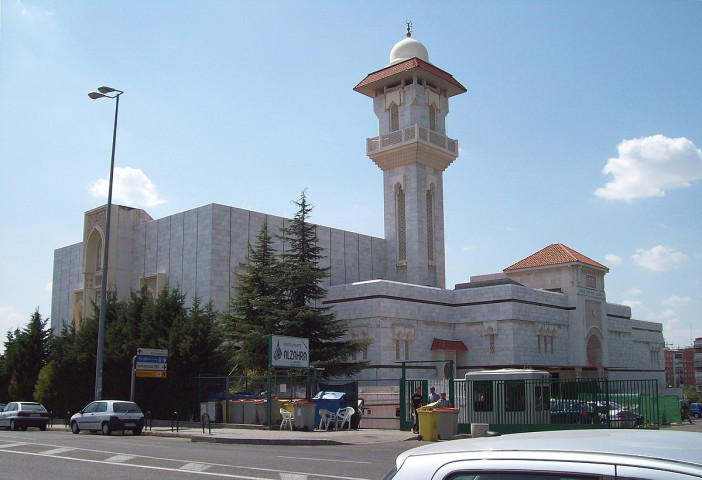

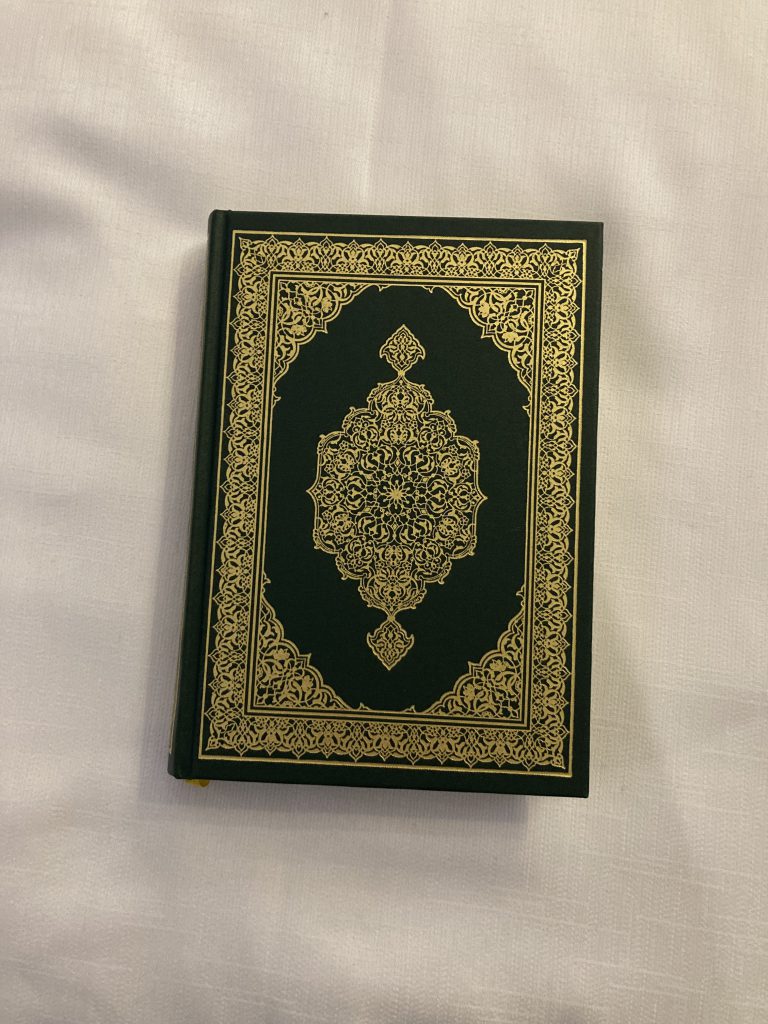
Right after the Masjid, I decided to take the metro to the west of Madrid and visit the University District, where I found myself wandering straight into Complutense University of Madrid. The campus was MASSIVE and I was grateful to have brought the skateboard as I explored their numerous campuses including, the department of Agriculture, Pharmacy, Film, and Astrophysics, all of which displayed fascinating works of students and faculty in each of their subjects. There were glass panels holding a variety of trees and plants in Spain, geological samples of the terrain, and old machines that were used in the development of film. I walked across the sky bridge which took me over the highway and onto the section where all the dorms were but I never entered. I made an attempt to talk to the students but they didn’t know English and brushed me off as they were already occupied with their own studies. I found it really cool how these students have designated hangout spots in random spots of Madrid, often forming a circle around a random spot outside a building or plaza just to talk. It’s atmosphere was more full and social than what I had noticed in UML, despite it being late in the hours with many of the classes being finished for the day. I continued to do a little bit more exploring, taking photos of graffiti and art on the walls and skating across the campus before heading back into the metro to my final destination of the day, Potencial Hardcore.
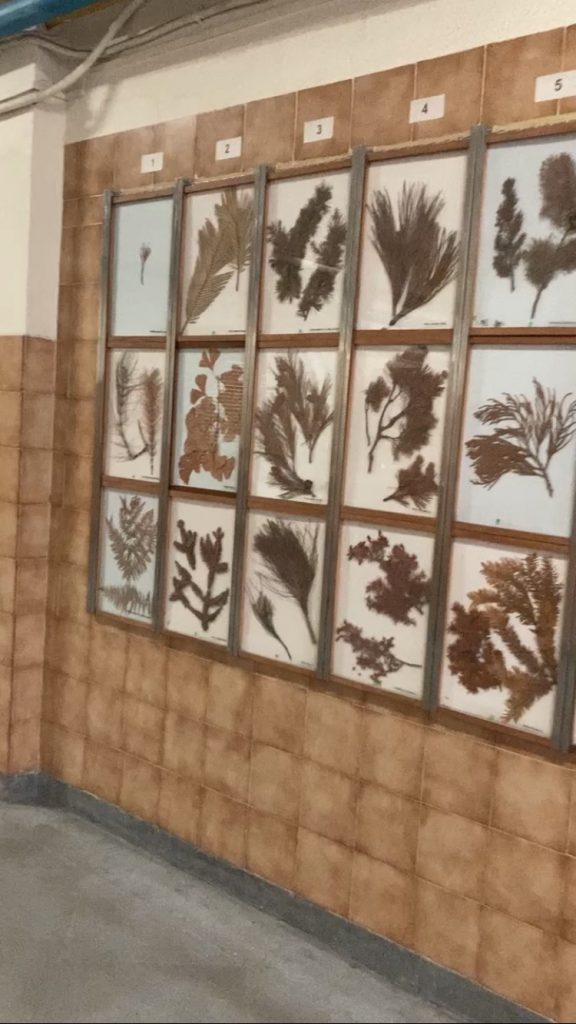

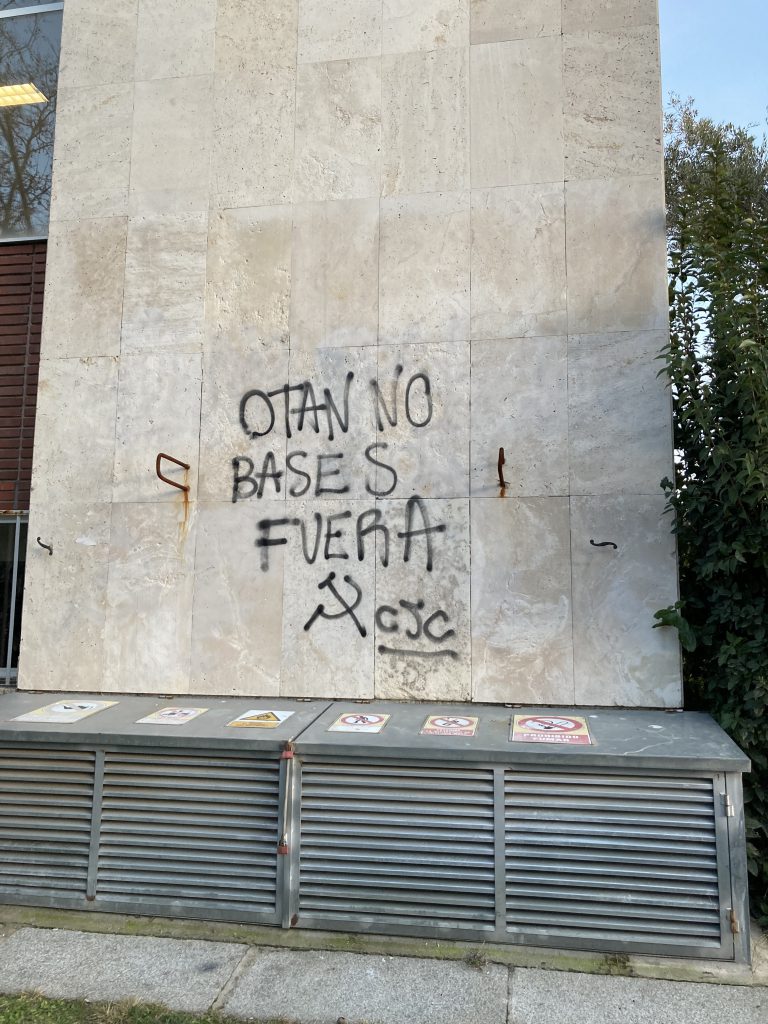

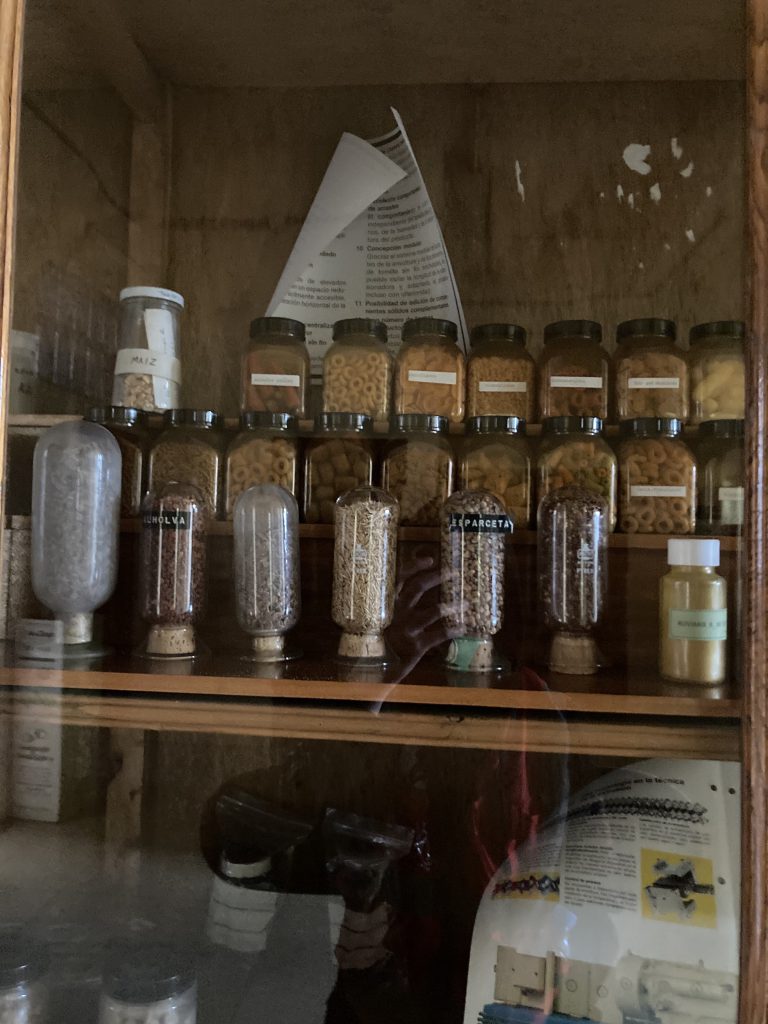

It took me a while to get there as it was also located in a quiet alleyway outside Puente de Vallecas. Arriving right before closing time and knocking on the locked, gated door which I assume is to deter Nazis, I was amazed to see how much content was hitting my eyes from the inside of the store. There were anti-fascist banners up on the ceiling, walls of pins, patches, and stickers, on the left and racks of clothes on the right. Vinyls and records were lined up at the center of the store for people to view from all sides, and a library containing Spanish books and zines on the history of punk in Spain and its socialist, communist, and anti-fascist background. The front of the store had a pinned wall of posters containing upcoming shows, however I wouldn’t have been able to make it to any of them during my stay. There were even boxing equipment in the back with the ‘Anti-Fascist Fighting Club’ logo. A small door in the back allowed me to peek into what I assume was the workstation for the owner as there was a sewing machine for clothes and patches. The music on the CDs and Vinyls included not just punk but also ska, Oi!, grindcore, metalcore, crust, hardcore, jazz, and reggae. I tried communicating with the shop owner with questions about the store and its history but unfortunately spoke no English. I was however able to share with him the hardcore band I’m in, Silent Spring, which we played on the loudspeakers for a couple minutes. I ended up buying a bunch of clothes the next day which I was so excited to wear around once they were washed.




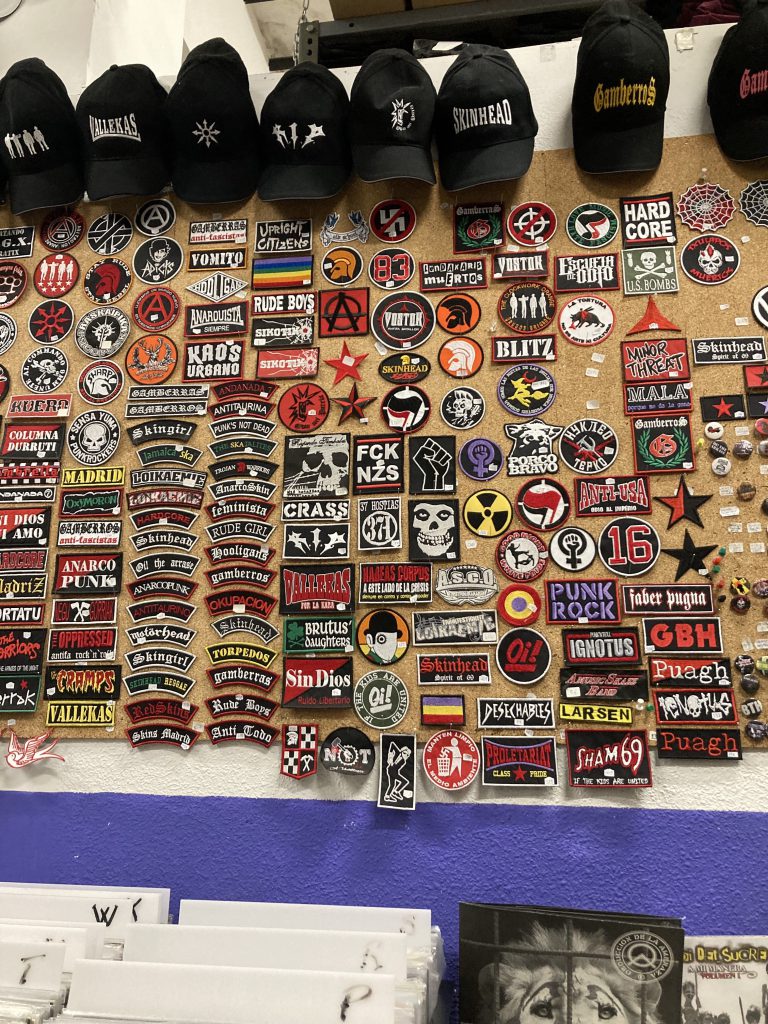

The honorable mentions go to the two best restaurants I ever went to in Madrid: Al Bahia from Lavapies and Manila Bar Restaurante from Tetuan. I went to Manila Bar Restaurante first on day four during my solo trip to the Filipino majority district of Tetuan. After navigating the district whose buildings and atmosphere closely resembled the ones in my home country, I walked in the restaurant with the most broken, American accent, Tagalog ever. However, the owners were delighted to hear the greeting and asked where I was from. There were a few titas sitting on the nearby table who were also interested in my journey here which I happily answered. The restaurant was playing Bee Gees (a classic staple to Filipino music and entertainment) from a small TV in the corner and decorations with the flag and star of the Philippines. I ordered the Lechon dish and Biko Ube dessert and made sure to savor the flavor because I was never going to have this experience again once I came back to the States.

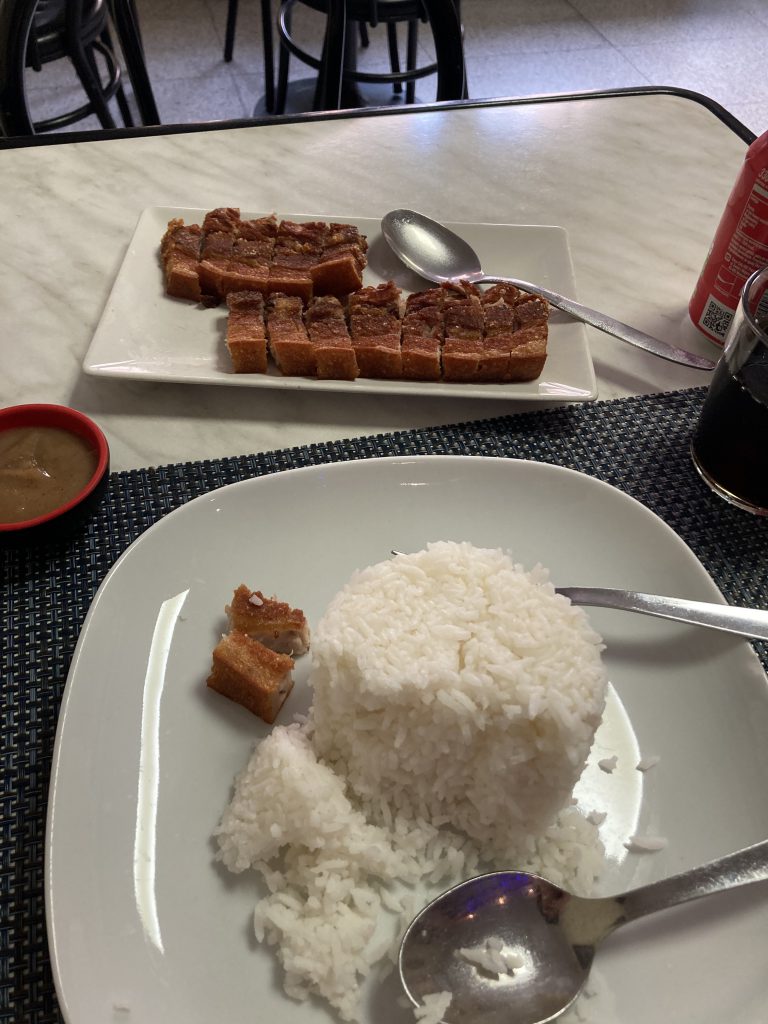


Al Bahia was a restaurant that Brianna, Kiara, and I went to on Thursday, right before the James Blick talk. It was a Moroccan restaurant in Lavapies and the atmosphere and decorations of the inside were absolutely gorgeous and topped any restaurant I’ve been to so far. The dining room was strewn with white and light gold, with thin sheets that covered the windows but still allowed sunlight to come in. Moroccan and Middle Eastern decorations were placed across the room and paintings of people in traditional clothing were hung up on the walls as well. Even the kitchenware and tea pots looked amazing. I ordered the tomato and meatball plate while my friends ordered the cuscus dishes. We also ordered the unnamed tea from the menu, which turned out to be a sweetened mint tea. I usually don’t drink tea but that was literally the best tea I had ever drunk in my life. The food took a little while to prepare but we didn’t mind at all and wanted to take in the place as much as we could without rushing.
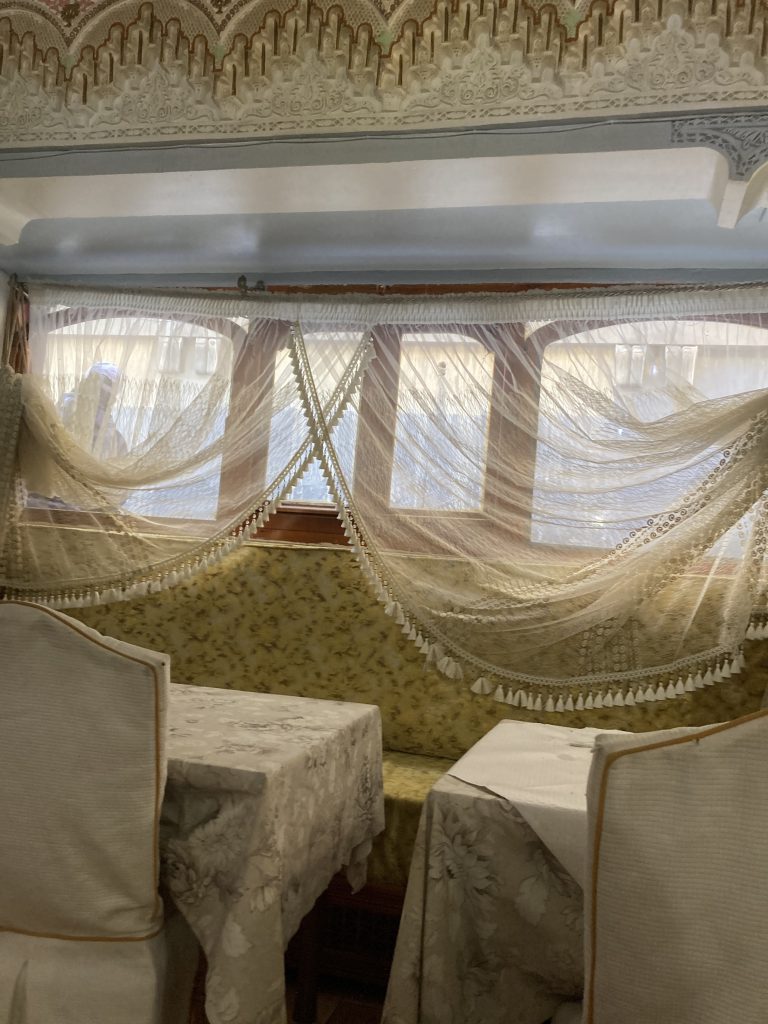
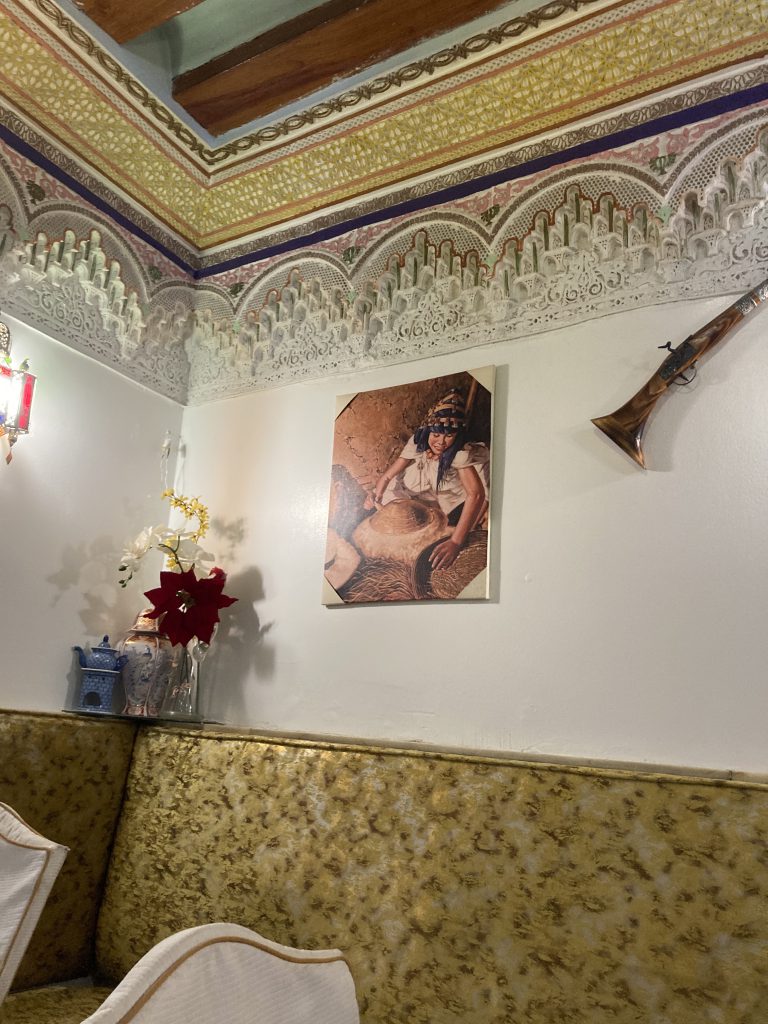
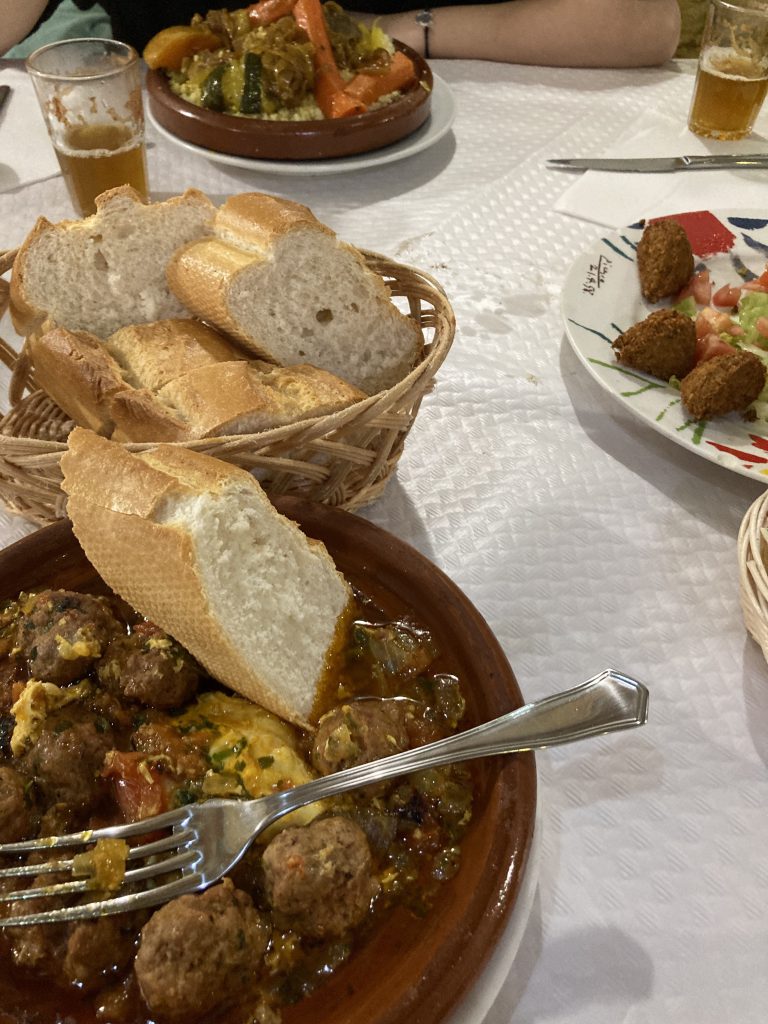
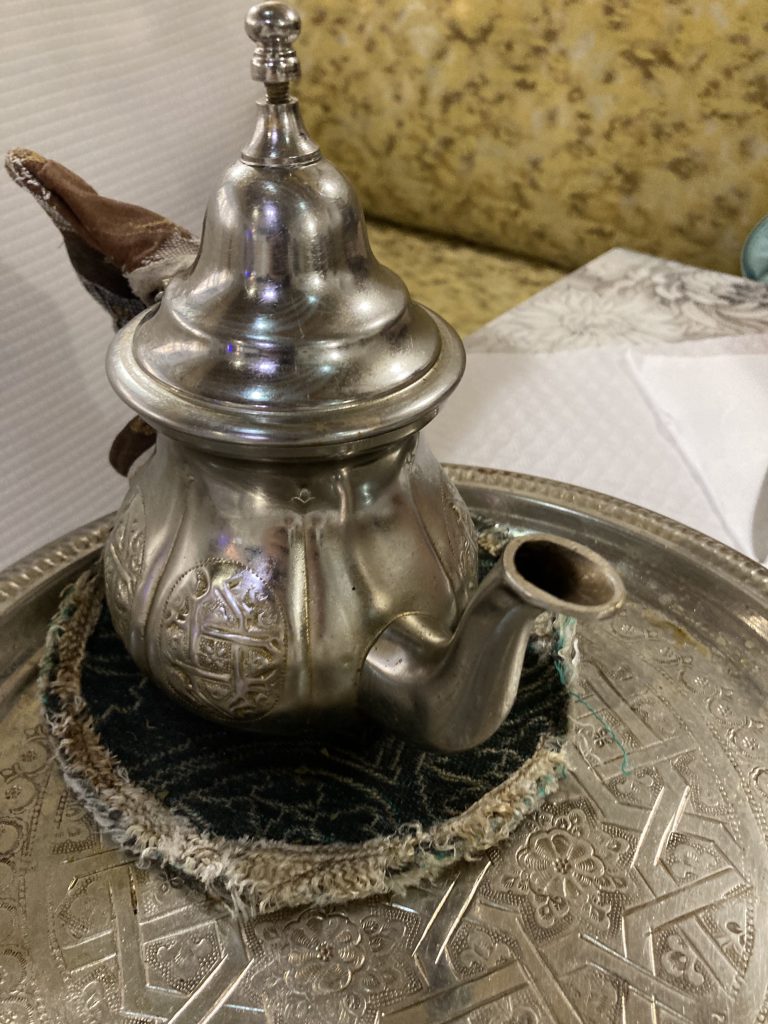
Okay those were some of the places that I went to in Spain, I hope you enjoyed it. I didn’t mind going back when we were leaving the country but now that i’m back in the states I really wish we had an extra week; there was so much I still wanted to do in Spain and it’s still cold and snowy here.
